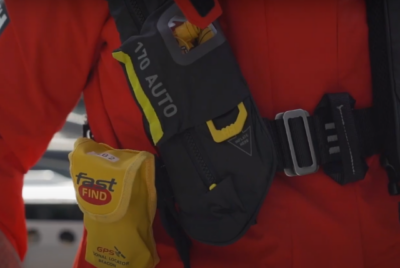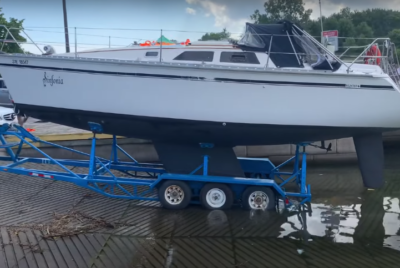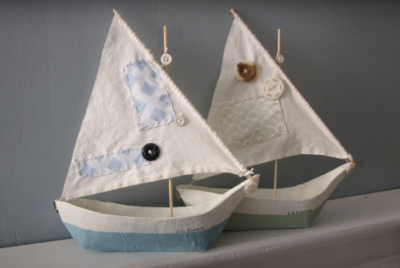What are the Parts of a Sailboat?
Sailing is a captivating adventure that allows us to harness the power of the wind and navigate the open waters. To fully appreciate and master the art of sailing, it is essential to have a comprehensive understanding of sailboat parts and their functions. I have had the pleasure of exploring these components extensively and sharing my knowledge with fellow sailing enthusiasts.
Hull
The hull is the main body or shell of a sailboat, providing buoyancy and structural support. It is the foundation upon which all other components are built. Sailboat hulls come in various shapes and designs, each offering different characteristics and performance attributes. Common types of hulls include monohulls and catamarans, with variations such as full keel, fin keel, and wing keel. The choice of materials for hull construction can range from fiberglass to aluminum or even wood, each with its own advantages and considerations.
Keel
The keel is a vital part of a sailboat, located beneath the hull. It serves two primary purposes: stability and lateral resistance. By providing a counterweight, the keel prevents the sailboat from capsizing while also counteracting the force of the wind. Keels can be fixed or retractable, with variations like fin keels, bulb keels, and centerboards. The choice of keel depends on the sailboat’s intended use, sailing conditions, and personal preferences.
Rudder
The rudder is responsible for steering the sailboat and controlling its direction. It is usually located at the stern, or back, of the boat. The rudder can be controlled through a tiller or a steering wheel, allowing the sailor to maneuver the sailboat effectively. Understanding how to use the rudder in coordination with the sails is essential for maintaining control and navigating accurately.
Mast
The mast is a tall vertical spar that supports the sails and forms an integral part of the sailboat’s structure. It is typically made of aluminum or carbon fiber, providing strength and rigidity. The mast plays a crucial role in determining the sailboat’s performance, as it supports the sails and allows for adjustments to optimize sail shape and performance. Different types of masts, such as keel-stepped and deck-stepped, offer unique characteristics and installation methods.
Sails
Sails are the heart and soul of a sailboat, capturing the wind’s power to propel the vessel forward. There are various types of sails used in different sailing conditions and maneuvers. The main sail is the largest and most significant sail, usually attached to the mast and boom. It provides the primary driving force for the sailboat. Additionally, jibs or headsails can be found forward of the mast, helping to balance the forces and provide additional power.
Rigging
Rigging refers to the network of wires, lines, and hardware that support and control the sails and mast. It can be divided into two categories: standing rigging and running rigging. Standing rigging provides support and stability to the mast, including elements like the forestay, backstay, sidestays, and spreaders. Running rigging is responsible for adjusting and controlling the sails, encompassing halyards, sheets, cleats, and reefing lines. Proper understanding and maintenance of rigging are crucial for safe and efficient sailing.
Boom and Boom Vang
The boom is a horizontal spar that extends aft from the mast and supports the foot of the main sail. It helps control the shape and tension of the sail, contributing to overall sail performance. The boom vang, also known as a kicker or a preventer, is a device that controls the boom’s position and prevents it from rising uncontrollably when the sail is eased. It plays a significant role in sail shape adjustment and stability.
Winches
Winches are mechanical devices used to control and adjust the tension of lines on a sailboat. They consist of a drum or a cylinder around which lines, such as halyards and sheets, can be wound or unwound. Winches provide mechanical advantage, allowing sailors to handle large loads and make adjustments with ease. Different types of winches exist, such as self-tailing winches, which simplify line handling and increase efficiency.
Hardware and Accessories
Sailboats are equipped with various hardware and accessories to enhance functionality and safety. Pulpits and stanchions provide support and safety rails around the deck perimeter. Compasses and chart plotters aid in navigation and route planning. Outboard motors are used for auxiliary power when wind conditions are unfavorable. Anchors are essential for secure mooring. Understanding the purpose and use of these accessories ensures a well-equipped and prepared sailboat.
Conclusion
Exploring the various parts of a sailboat is an exciting journey that deepens our understanding of the intricate mechanisms at play. Each component has a specific function and contributes to the overall performance and safety of the sailboat. By familiarizing ourselves with these parts and their interactions, we become more skilled sailors and advisors, capable of sharing our knowledge and providing valuable suggestions to fellow enthusiasts.
FAQs
How do I determine the appropriate sailboat hull type for my needs?
Choosing the right hull type depends on factors such as sailing conditions, intended use (cruising or racing), and personal preferences. It’s recommended to consult with experienced sailors or sailboat brokers to assess your specific needs and match them with suitable hull designs.
What materials are commonly used for sailboat hull construction?
Fiberglass is the most common material for sailboat hulls due to its durability, strength, and ease of maintenance. Other materials include aluminum, steel, wood, and even composite materials like carbon fiber.
How often should I inspect and maintain the standing rigging?
Regular inspections of the standing rigging are crucial for identifying any signs of wear, corrosion, or fatigue. It is recommended to inspect the rigging annually and perform maintenance as needed. Consult with a professional rigger for a comprehensive inspection and maintenance plan.
What are some safety considerations when using winches on a sailboat?
When using winches, always keep your hands and fingers clear of moving parts. Use winch handles with a secure grip and be cautious of sudden releases. It’s advisable to wear gloves for added grip and protection. Regularly lubricate and maintain winches to ensure smooth operation.
How can I improve my sailboat’s performance through sail adjustments?
Sail adjustments are key to optimizing performance. Experiment with sail trim, including adjusting the angle of the sails to the wind (called pointing) and shaping the sails for optimal airflow. Small adjustments can have a significant impact on speed and efficiency.







